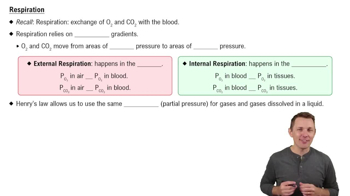Which eye muscle passes through the trochlea and turns the eye inferiorly and laterally?
a. Lateral rectus muscle
b. Inferior rectus muscle
c. Inferior oblique muscle
d. Superior oblique muscle
 Verified step by step guidance
Verified step by step guidance Verified video answer for a similar problem:
Verified video answer for a similar problem:



 5:39m
5:39mMaster Origin and Insertion with a bite sized video explanation from Bruce Bryan
Start learning